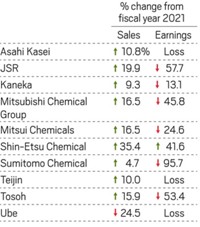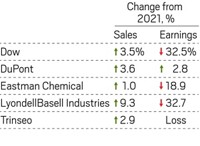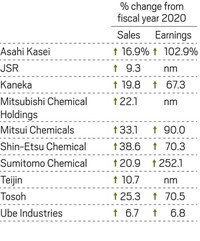Advertisement
Grab your lab coat. Let's get started
Welcome!
Welcome!
Create an account below to get 6 C&EN articles per month, receive newsletters and more - all free.
It seems this is your first time logging in online. Please enter the following information to continue.
As an ACS member you automatically get access to this site. All we need is few more details to create your reading experience.
Not you? Sign in with a different account.
Not you? Sign in with a different account.
ERROR 1
ERROR 1
ERROR 2
ERROR 2
ERROR 2
ERROR 2
ERROR 2
Password and Confirm password must match.
If you have an ACS member number, please enter it here so we can link this account to your membership. (optional)
ERROR 2
ACS values your privacy. By submitting your information, you are gaining access to C&EN and subscribing to our weekly newsletter. We use the information you provide to make your reading experience better, and we will never sell your data to third party members.
Materials
Engineering Polymers
All plastics businesses have been hit by the recession; some will recover better than others
by Alexander H. Tullo
June 22, 2009
| A version of this story appeared in
Volume 87, Issue 25

It wasn’t too long ago—about a year for most materials—that the plastics industry was flying high. Demand was strong, supply was tight, and profits were fat.
That changed abruptly. By the end of 2008, the economic climate became more than the plastics industry could bear. Consumer demand started to crumble. Oil prices tumbled from record highs of nearly $150 per barrel in July to less than $50 in December. Industrial customers, expecting polymer prices to fall in kind, stopped buying, creating a self-fulfilling prophecy. Compounding the problems, banks stopped lending and extending credit. Companies throughout the supply chain had to liquidate inventories to generate cash to survive.
According to the American Chemistry Council, the chemical industry’s main trade association, U.S. sales and captive use of major plastics—polyethylene, polypropylene, polystyrene, and polyvinyl chloride—slipped by 6.6% in December versus the year-ago period. For the year, the decline was 9.9%. Production saw a sharper drop, falling 32.6% from the prior December and 12.3% for the year.
Engineering polymers, used in big-ticket items such as cars, electronics, and appliances, have been hit even harder than commodity materials such as polyethylene and polypropylene, used in trash bags, food packaging, and other everyday necessities. And even with talk of the economy improving, the engineering polymer industry still faces weak fundamentals.
J.D. Power & Associates forecasts that only 10 million new cars will be sold this year, down 30–40% from previous years. According to the U.S. Census Bureau, U.S. housing starts were down 54.2% in April versus April 2008. That same month, sales of durable goods had fallen for the ninth consecutive month.
But for engineering polymers, it’s not just about the economy. Each material has a unique story to tell. Some are replacing metal and glass, whereas others are being replaced themselves.
This week, C&EN profiles three materials: nylon, polycarbonate, and acrylonitrile-butadiene-styrene (ABS). Nylon is still replacing metal in applications such as air-intake manifolds and oil pans. Polycarbonate is suffering from the controversy over bisphenol A and the decline in compact disc sales, but it is still gunning for glass in other sectors. ABS isn’t being replaced with other materials much, but it isn’t winning new applications the way it used to.





Join the conversation
Contact the reporter
Submit a Letter to the Editor for publication
Engage with us on Twitter